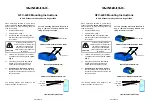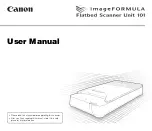
C-8 Microtek ScanWizard Pro for Windows
UCR
Undercolor removal is the practice of removing quantities of yellow, magenta,
and cyan ink from the dark neutral areas in a reproduction and replacing what
was removed with an appropriate amount of black. Kodak implements UCR in
its Color Profiles within a TAC constraint: CMY gets replaced by the maximum
amount of K up to the TAC limit—so you get the highest possible density.
The neutral center of both diagrams show different UCR/TAC settings. With
UCR applied, less process inks and more black increases the density in the
shadows.
Advantages & Disadvantages to UCR
Undercolor removal within a TAC constraint reduces the problem of printing
four solid layers of ink, one on top of the other, while each previous layer is still
wet. Reducing the ink coverage, TAC, improves the ability of the paper to firmly
hold each layer of wet ink.
Less ink means better control, and faster drying times. Also, replacing cmy ink
with the less expensive black ink has proven more cost efficient on long runs
that use more ink.
Also, blacks and neutrals that print black are not influenced easily by shifts in
the chromatic inks which cause color casts in the shadow tones. Separations
produced with greater UCR produce darker blacks which result in better
shadow detail.
However, some printers don’t like high UCR because of on-pr
of on-pr
of on-pr
of on-pr
of on-press dot
ess dot
ess dot
ess dot
ess dot gain and
contrasty rosettes.
















































